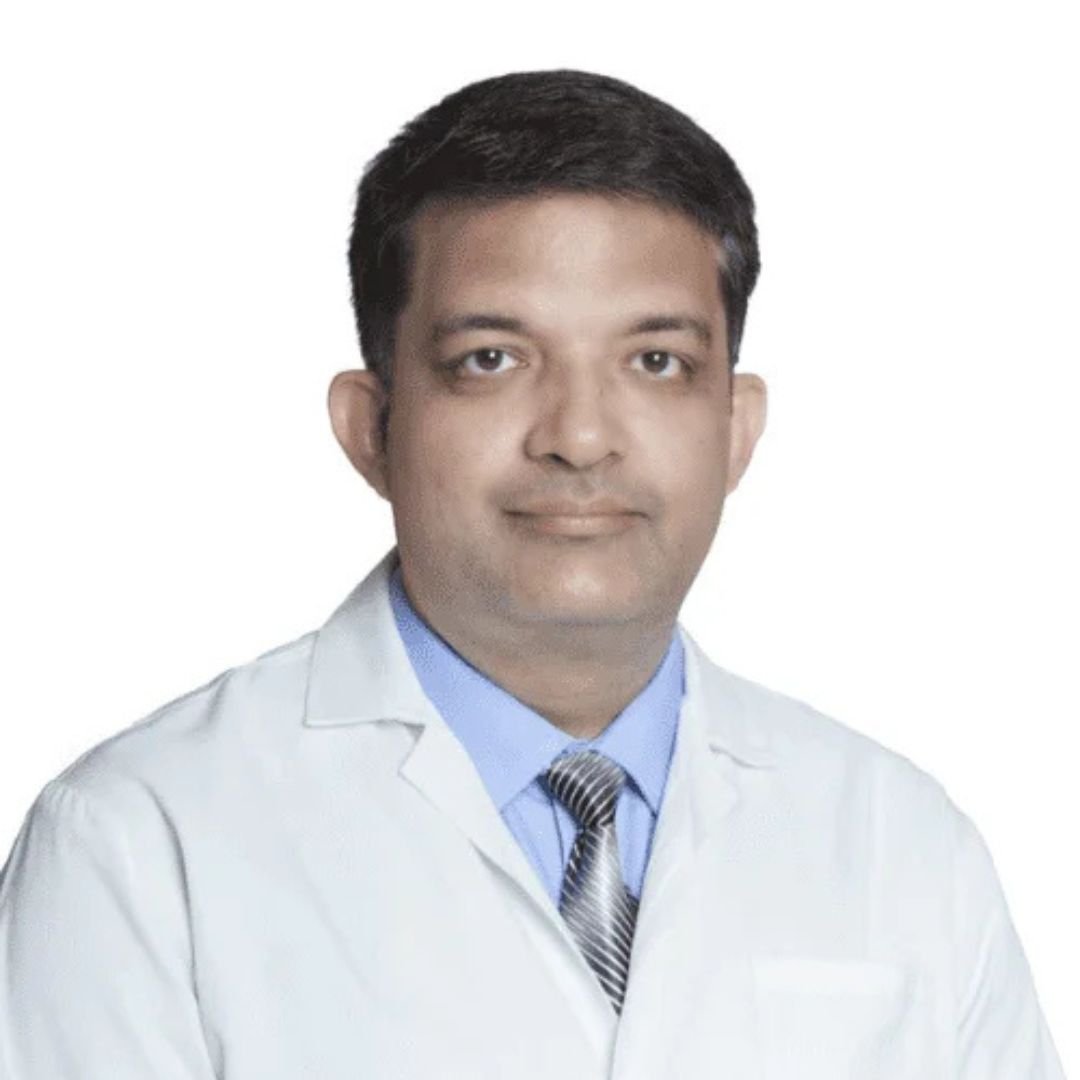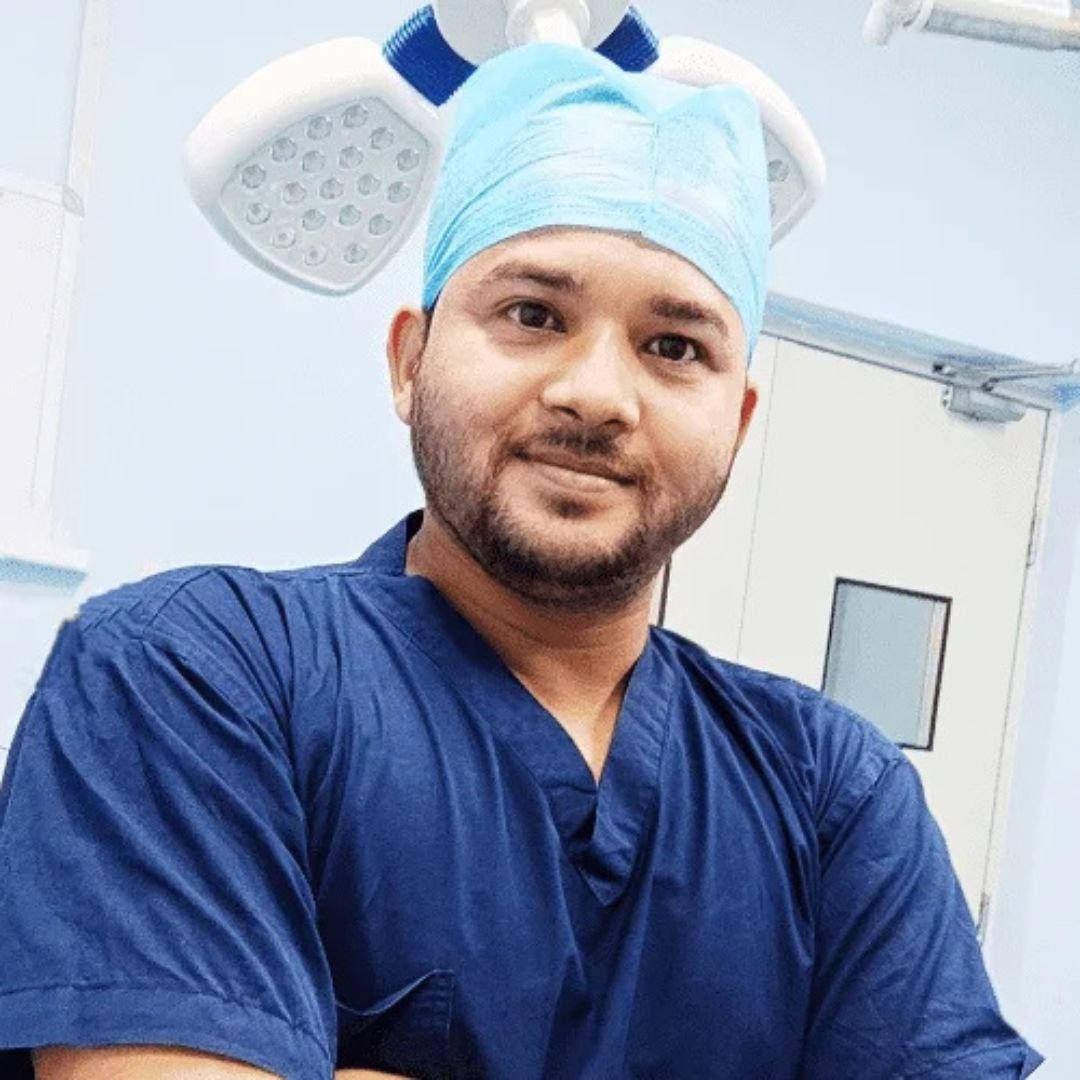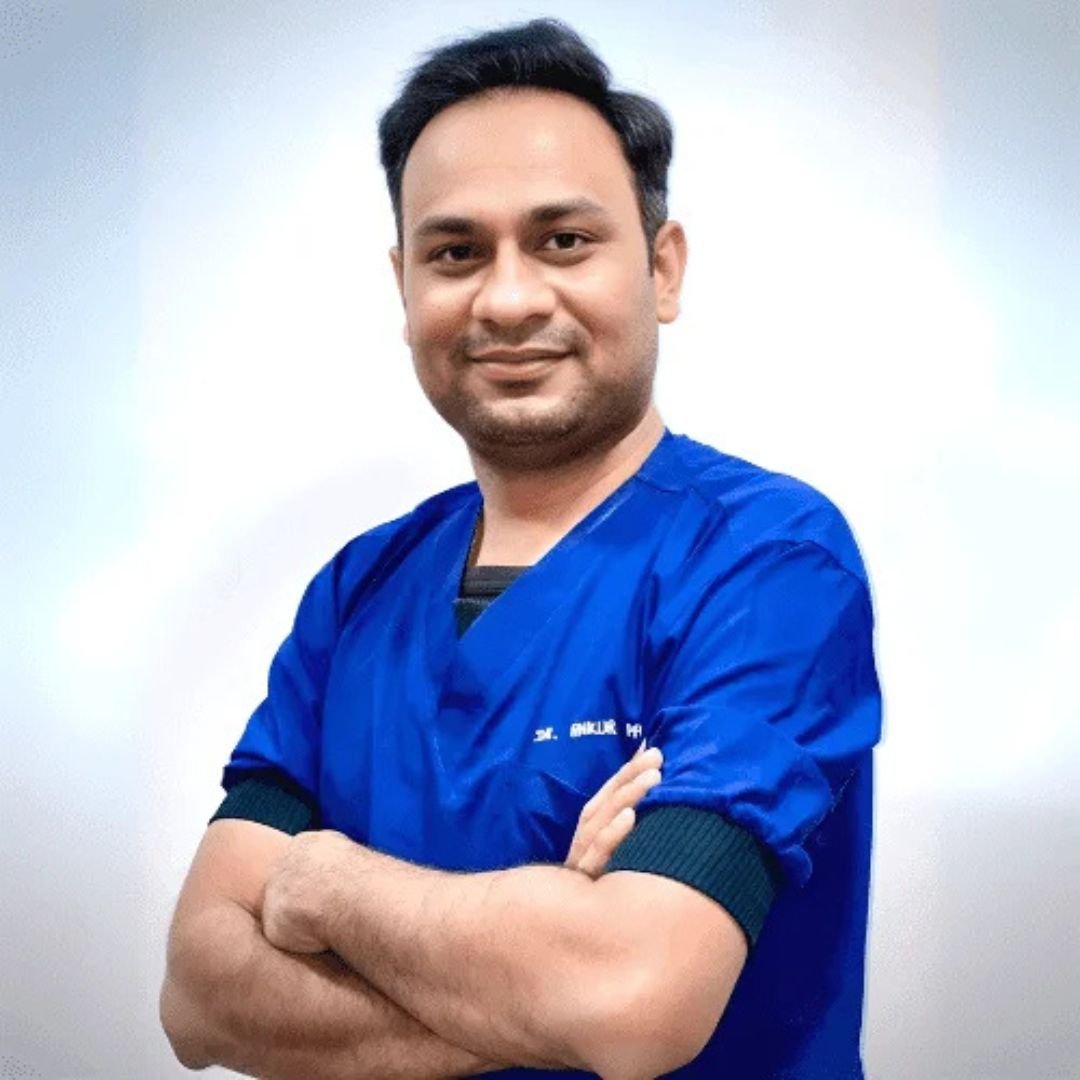Breast Lump Removal Surgery
Breast lumps are a common concern among women and, in some cases, men. While not all breast lumps are cancerous, they can cause discomfort, anxiety, and require medical attention. Breast lump surgery is a procedure designed to remove these lumps, whether they are benign or malignant. At Bharatkare, we specialize in providing comprehensive care for patients seeking breast lump excision and other related treatments. Our team of experienced professionals ensures that every patient receives personalized care, from diagnosis to recovery.
If you’ve noticed a lump in your breast, it’s essential to consult a specialist promptly. Understanding your options, including how to cure breast lump without surgery or exploring breast lump removal surgery, can help you make an informed decision about your health.
Book Appointments With Our Expert Doctors Near You
- Get consultation for 50+ diseases across India
- In-person and online consultation with experienced doctors
- Extensive medical assistance throughout your treatment


Dr Ashish Sachdeva
MBBS, MS - General Surgery, General Surgeon, Bariatric Surgeon, Laparoscopic Surgeon
4.9/5
20 Years Experience
Vadodara, India

Dr. Tanmay Jain
General Surgeon, Laparoscopic Surgeon and Proctologist
4.9/5
12 Years Experience
Jaipur, India

Dr. Vikram Vasuniya
MBBS, MS (General Surgery) General Laparoscopic & Laser Surgeon, Laser Proctologist
4.9/5
14 Years Experience
Bhopal, India

Dr. Sujeet Kumar Bharti
MBBS, MS (General Surgery) General Laparoscopic & Laser Surgeon, Laser Proctologist
4.9/5
22 Years Experience
Patna, India
What is a Breast Lump?
A breast lump is a localized swelling, bump, or mass in the breast tissue. It can vary in size, texture, and tenderness. While many breast lumps are non-cancerous (benign), some may be indicative of breast cancer. Common types of benign breast lumps include fibroadenomas, cysts, and lipomas.
Understanding the nature of the lump is crucial. This is where breast lump differential diagnosis comes into play. A differential diagnosis involves evaluating the lump’s characteristics through physical exams, imaging tests like mammograms or ultrasounds, and sometimes biopsies. This process helps determine whether the lump requires breast lump removal surgery or can be managed through non-surgical methods like how to dissolve breast lumps naturally.
Disease name
Breast Lump
Surgery name
Lumpectomy
Duration
60 - 120 minutes
Treated by
Plastic or cosmetic surgeon
Which Doctor to Consult for Breast Lump?
If you discover a breast lump, the first step is to consult the right specialist. Typically, you should visit a breast surgeon or an oncologist if cancer is suspected. At Bharatkare, we have a team of highly skilled professionals who specialize in diagnosing and treating breast lumps.
During your consultation, the doctor will perform a thorough examination and may recommend additional tests to determine the nature of the lump. Whether you need breast lump surgery or can explore non-surgical options, our experts will guide you through every step of the process.
How to Cure Breast Lump Without Surgery
Not all breast lumps require surgical intervention. In many cases, non-surgical methods can effectively manage or even eliminate the lump. Here are some approaches to how to cure breast lump without surgery:
- Medication: Certain medications can help shrink or dissolve breast lumps, especially if they are caused by hormonal imbalances.
- Lifestyle Changes: Maintaining a healthy diet, exercising regularly, and reducing stress can positively impact breast health.
- Natural Remedies: Some patients explore how to dissolve breast lumps naturally using herbal supplements, essential oils, or dietary changes. However, it’s crucial to consult your doctor before trying any natural remedies.
While these methods can be effective for benign lumps, it’s essential to monitor the lump’s progress and seek medical advice if there are any changes.
Breast Lump Removal Surgery: What to Expect
When non-surgical methods are not viable, breast lump removal surgery becomes the recommended course of action. This procedure, also known as breast lump excision, involves removing the lump and, in some cases, surrounding tissue to ensure complete removal.
The surgery is typically performed under general anesthesia and can be done using traditional surgical methods or minimally invasive techniques, depending on the lump’s size and location. Recovery time varies, but most patients can resume normal activities within a few weeks.
At Bharatkare, we prioritize patient comfort and safety. Our state-of-the-art facilities and experienced surgeons ensure that every breast lump removal surgery is performed with precision and care.
Breast Lump Removal Surgery Cost
The cost of breast lump removal surgery can vary depending on several factors, including the complexity of the procedure, the surgeon’s expertise, and the facility’s location. While we don’t provide specific figures here, we encourage you to contact us for a detailed consultation. At Bharatkare, we believe in transparent pricing and will provide you with a comprehensive breakdown of the breast lump removal surgery cost based on your individual needs.
Preparation for Breast Lump Removal Surgery
Preparing for breast lump removal surgery is a crucial step to ensure a smooth procedure and recovery. Here’s what you need to know:
- Medical Evaluation: Before the surgery, your doctor will conduct a thorough medical evaluation, including blood tests, imaging scans, and a review of your medical history. This helps identify any potential risks and ensures you’re fit for the procedure.
- Medication Adjustments: Inform your doctor about any medications or supplements you’re taking. You may need to stop certain medications, such as blood thinners, a few days before the surgery.
- Lifestyle Preparations: Avoid smoking and alcohol at least a week before the surgery, as they can interfere with healing. Maintain a healthy diet to boost your immune system.
- Logistics: Arrange for someone to drive you home after the surgery and assist you during the initial recovery period.
At Bharatkare, our team will provide you with a detailed pre-surgery checklist to ensure you’re fully prepared for your breast lump excision.
What Happens During Breast Lump Removal Surgery?
Understanding the procedure can help alleviate any anxiety you may have. Here’s a step-by-step overview of what happens during breast lump removal surgery:
- Anesthesia: The surgery is performed under general anesthesia, ensuring you’re comfortable and pain-free throughout the procedure.
- Incision: The surgeon makes a small incision in the breast, typically near the areola or along the natural creases, to minimize visible scarring.
- Lump Removal: The lump is carefully excised, along with a small margin of surrounding tissue if necessary, to ensure complete removal.
- Closure: The incision is closed with sutures or surgical glue, and a sterile dressing is applied.
The entire procedure usually takes 1-2 hours, depending on the lump’s size and complexity.
Recovery After Breast Lump Removal Surgery
Recovery from breast lump removal surgery varies from person to person, but here’s a general timeline and tips to ensure a smooth healing process:
- Immediate Post-Surgery: You’ll be monitored in a recovery room for a few hours before being discharged. Mild pain, swelling, and bruising are normal and can be managed with prescribed medications.
- First Week: Rest is essential during this period. Avoid strenuous activities and heavy lifting. Keep the surgical area clean and dry to prevent infection.
- 2-4 Weeks: Most patients can resume light activities and return to work. However, avoid vigorous exercise until your doctor gives the green light.
- Long-Term Care: Attend all follow-up appointments to monitor your healing. Your doctor may recommend scar management techniques to minimize visible scarring.
Benefits of Breast Lump Removal Surgery
Opting for breast lump excision offers several advantages:
- Definitive Diagnosis: The removed lump can be sent for biopsy, providing a clear diagnosis.
- Symptom Relief: Surgery alleviates pain, discomfort, and anxiety associated with the lump.
- Cancer Prevention: Removing potentially cancerous lumps reduces the risk of breast cancer.
- Improved Aesthetics: Surgery can restore the natural shape and appearance of the breast.
When is Breast Lump Removal Surgery Required?
Breast lump removal surgery is recommended in the following scenarios:
- The lump is suspicious or confirmed to be cancerous.
- The lump causes significant pain or discomfort.
- Non-surgical methods, such as how to dissolve breast lumps naturally, have been ineffective.
- The lump is growing rapidly or changing in texture.
Your doctor will evaluate your specific case and recommend surgery only if it’s the best course of action.
Recovery Tips After Breast Lump Removal Surgery
Here are some practical tips to ensure a smooth recovery:
Recovery Phase | Tips |
First 24 Hours | Rest, avoid driving, and take prescribed pain medications. |
First Week | Wear a supportive bra, avoid lifting heavy objects, and keep the incision clean. |
2-4 Weeks | Gradually resume light activities, but avoid strenuous exercise. |
Long-Term | Attend follow-up appointments and follow your doctor’s scar care advice. |
Non-Surgical Alternatives to Breast Lump Removal
For those exploring how to cure breast lump without surgery, here are some non-surgical alternatives:
- Medication: Hormonal therapies or antibiotics can help shrink certain types of lumps.
- Aspiration: Fluid-filled cysts can be drained using a fine needle.
- Lifestyle Changes: A healthy diet, regular exercise, and stress management can improve overall breast health.
- Natural Remedies: Some patients opt for how to dissolve breast lumps naturally using herbal supplements or dietary changes. However, always consult your doctor before trying these methods.
Advanced Diagnostic Techniques for Breast Lumps
Accurate diagnosis is the cornerstone of effective treatment. At Bharatkare, we utilize advanced diagnostic techniques to evaluate breast lumps and determine the best course of action. Here’s an overview of the methods we use:
- Mammography: This imaging technique uses low-dose X-rays to detect abnormalities in breast tissue. It’s particularly useful for identifying early-stage cancers.
- Ultrasound: Ultrasound imaging helps distinguish between solid lumps and fluid-filled cysts. It’s often used in conjunction with mammography for a more detailed evaluation.
- MRI (Magnetic Resonance Imaging): MRI provides high-resolution images of the breast, making it ideal for assessing complex cases or evaluating the extent of a known condition.
- Biopsy: A biopsy involves taking a small sample of the lump for laboratory analysis. This is the most definitive way to determine whether a lump is benign or malignant.
These diagnostic tools play a critical role in breast lump differential diagnosis, ensuring that each patient receives a precise and personalized treatment plan.
Types of Breast Lumps and Their Characteristics
Understanding the different types of breast lumps can help you better comprehend your condition and treatment options. Here are some common types:
- Fibroadenomas: These are benign, solid lumps that are often smooth and movable. They are most common in women under 30.
- Cysts: Fluid-filled sacs that can vary in size and tenderness. They are more common in women aged 35-50.
- Lipomas: Soft, fatty lumps that are usually harmless and painless.
- Malignant Tumors: Cancerous lumps are often irregular in shape, hard, and fixed in place. Early detection is crucial for effective treatment.
If you’re unsure about the type of lump you have, consult a specialist to determine which doctor to consult for breast lump and undergo the necessary tests.
Minimally Invasive Breast Lump Removal Techniques
Advancements in medical technology have made it possible to perform breast lump excision using minimally invasive techniques. These methods offer several benefits, including shorter recovery times and reduced scarring.
- Lumpectomy: This procedure involves removing the lump and a small margin of surrounding tissue. It’s often used for both benign and malignant lumps.
- Vacuum-Assisted Biopsy: A small incision is made, and a vacuum-powered device is used to remove the lump. This technique is ideal for smaller lumps.
- Laser Ablation: A laser is used to destroy the lump without the need for surgical removal. This method is still under research but shows promise for certain types of lumps.
At Bharatkare, we prioritize minimally invasive techniques whenever possible to ensure a faster and more comfortable recovery for our patients.
Post-Surgery Scar Management
Scarring is a common concern after breast lump removal surgery. Here are some tips to minimize scarring and promote healing:
- Silicone Gel Sheets: These sheets can help flatten and soften scars over time.
- Massage Therapy: Gently massaging the scar tissue can improve blood flow and reduce stiffness.
- Topical Treatments: Creams containing vitamin E or onion extract can help fade scars.
- Sun Protection: Keep the scarred area protected from direct sunlight to prevent discoloration.
Your surgeon will provide personalized scar management recommendations based on your specific case.
Psychological Support During Breast Lump Treatment
Dealing with a breast lump can be emotionally challenging. At Bharatkare, we offer comprehensive psychological support to help patients cope with anxiety, fear, and uncertainty.
- Counseling Services: Our team includes trained counselors who can provide emotional support and coping strategies.
- Support Groups: Connecting with others who have undergone similar experiences can be incredibly comforting.
- Educational Resources: We provide detailed information about breast lump surgery, recovery, and non-surgical options to empower patients with knowledge
Diet and Lifestyle Tips for Breast Health
Maintaining a healthy lifestyle can play a significant role in preventing breast lumps and promoting overall well-being. Here are some tips:
- Balanced Diet: Include plenty of fruits, vegetables, whole grains, and lean proteins in your diet.
- Regular Exercise: Aim for at least 30 minutes of moderate exercise most days of the week.
- Limit Alcohol: Excessive alcohol consumption has been linked to an increased risk of breast cancer.
- Avoid Smoking: Smoking can negatively impact your overall health and increase the risk of various conditions.
For those exploring how to dissolve breast lumps naturally, these lifestyle changes can complement other treatment methods.
Long-Term Outcomes of Breast Lump Removal Surgery
Undergoing breast lump removal surgery can have a significant impact on your long-term health and well-being. Here’s what you can expect:
- Improved Physical Health: Removing a painful or uncomfortable lump can alleviate symptoms and improve your quality of life.
- Peace of Mind: Knowing that the lump has been removed and analyzed can reduce anxiety and provide clarity about your condition.
- Cancer Prevention: If the lump was precancerous or cancerous, surgery can prevent the spread of cancer and improve survival rates.
- Aesthetic Results: Modern surgical techniques aim to preserve the natural shape and appearance of the breast, minimizing visible changes.
At Bharatkare, we monitor our patients closely after surgery to ensure optimal long-term outcomes and address any concerns that may arise.
Preventive Measures to Reduce the Risk of Breast Lumps
While not all breast lumps can be prevented, certain measures can help reduce your risk:
- Regular Self-Exams: Perform monthly breast self-exams to detect any changes early.
- Routine Screenings: Schedule regular mammograms and clinical breast exams as recommended by your doctor.
- Healthy Lifestyle: Maintain a balanced diet, exercise regularly, and avoid smoking and excessive alcohol consumption.
- Hormonal Balance: If you’re on hormone replacement therapy or birth control pills, discuss the potential risks with your doctor.
For those exploring how to dissolve breast lumps naturally, these preventive measures can complement your efforts.
Understanding the Role of Hormones in Breast Lumps
Hormonal fluctuations can contribute to the development of breast lumps. Here’s how hormones play a role:
- Estrogen and Progesterone: These hormones can cause breast tissue to swell and form lumps, especially during menstrual cycles, pregnancy, or menopause.
- Hormonal Imbalances: Conditions like polycystic ovary syndrome (PCOS) or thyroid disorders can increase the risk of breast lumps.
- Medications: Hormonal therapies, including birth control pills and hormone replacement therapy, can sometimes lead to lump formation.
If you suspect hormonal imbalances are contributing to your breast lumps, consult a specialist to explore treatment options, including how to cure breast lump without surgery.
The Importance of Follow-Up Care After Surgery
Follow-up care is a critical component of the recovery process after breast lump removal surgery. Here’s why it matters:
- Monitoring Healing: Regular check-ups allow your doctor to ensure the surgical site is healing properly and there are no complications.
- Detecting Recurrence: Early detection of any new lumps or changes in breast tissue is crucial for timely intervention.
- Adjusting Treatment Plans: Based on your recovery progress, your doctor may recommend additional treatments or lifestyle changes.
At Bharatkare, we provide personalized follow-up care plans to ensure our patients achieve the best possible outcomes.
Common Myths About Breast Lumps and Surgery
There are many misconceptions surrounding breast lumps and their treatment. Let’s debunk some common myths:
- Myth: All Breast Lumps Are Cancerous: Fact: The majority of breast lumps are benign and not life-threatening.
- Myth: Surgery Is the Only Option: Fact: Many lumps can be managed with non-surgical methods like how to dissolve breast lumps naturally.
- Myth: Breast Lumps Only Affect Women: Fact: Men can also develop breast lumps, though it’s less common.
- Myth: Surgery Always Leaves Visible Scars: Fact: Modern surgical techniques aim to minimize scarring and preserve the breast’s appearance.
Understanding the facts can help you make informed decisions about your health.
The Role of Genetics in Breast Lumps
Genetics can play a significant role in the development of breast lumps and breast cancer. Here’s what you need to know:
- Family History: If you have a family history of breast cancer or benign breast conditions, you may be at a higher risk.
- Genetic Testing: Tests like BRCA1 and BRCA2 can identify genetic mutations that increase the risk of breast cancer.
- Preventive Measures: If you have a genetic predisposition, your doctor may recommend more frequent screenings or preventive treatments.
At Bharatkare, we offer genetic counseling and testing to help patients understand their risk factors and take proactive steps.
Innovations in Breast Lump Treatment
The field of breast health is constantly evolving, with new innovations improving diagnosis and treatment. Here are some recent advancements:
- 3D Mammography: This technology provides a more detailed view of breast tissue, improving the accuracy of diagnoses.
- Targeted Therapies: For cancerous lumps, targeted therapies can attack cancer cells without harming healthy tissue.
- Cryoablation: This minimally invasive technique uses extreme cold to destroy lumps without surgery.
- AI-Assisted Diagnostics: Artificial intelligence is being used to analyze imaging data and detect abnormalities with greater precision.
These innovations are transforming the way we approach breast lump removal surgery and other treatments.
Key Takeaways
- Early Detection is Crucial: Regular self-exams and screenings can help detect breast lumps early, improving treatment outcomes.
- Not All Lumps Require Surgery: Many lumps can be managed with non-surgical methods like medication or lifestyle changes.
- Personalized Care Matters: At Bharatkare, we tailor treatment plans to meet the unique needs of each patient.
- Recovery is Manageable: With proper care and follow-up, recovery from breast lump removal surgery is smooth and effective.
FAQ
You Can Find All Answers Here
The procedure itself is performed under anesthesia, so you won’t feel any pain during the surgery. Post-surgery, mild discomfort and swelling are common, but these can be managed with prescribed medications.
While surgery removes the existing lump, new lumps can develop in the future. Regular follow-ups and self-exams are essential for early detection.
Most patients can resume normal activities within 2-4 weeks, but full recovery may take longer depending on the complexity of the procedure.
Like any surgery, there are risks such as infection, bleeding, or scarring. However, these risks are minimal when the procedure is performed by an experienced surgeon.
Yes, depending on the type and nature of the lump, non-surgical options like how to dissolve breast lumps naturally or medication may be viable. Consult your doctor to explore these alternatives.
Quick Links
Popular Surgeries
Find Us
© Copyright BharatKare 2025. All Right Reserved.



